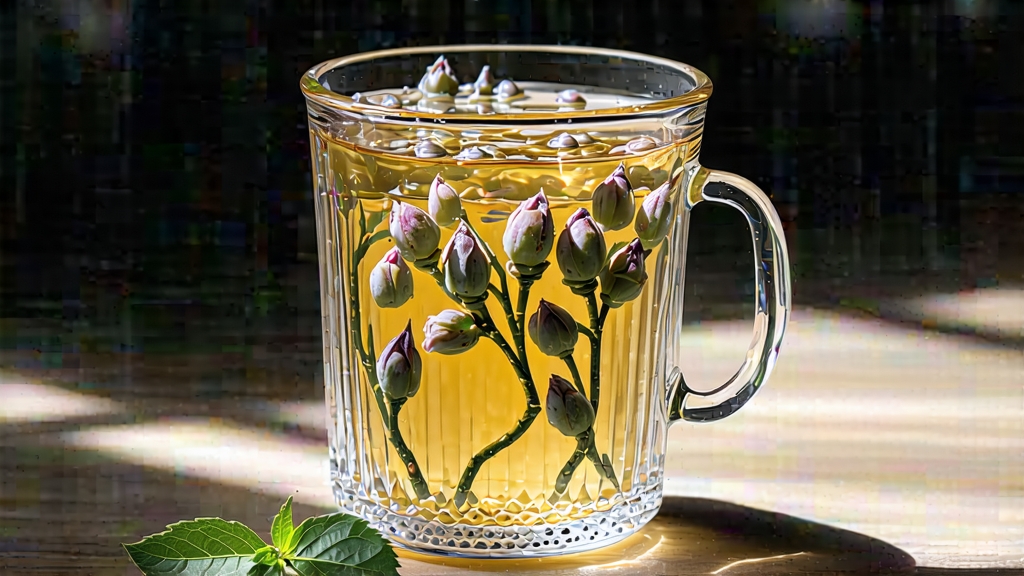
White Hair Silver Needle—Bai Hao Yin Zhen in Mandarin—is the most aristocratic expression of Chinese white tea. To the uninitiated it can appear almost too modest: pale liquor, whisper-light aroma, buds that look like tiny spears of frost. Yet in the spectrum of Camellia sinensis this is the closest tea comes to capturing moonlight itself—cool, luminous, quietly persistent. Understanding its story means travelling to the northeastern corner of Fujian province, listening to the slow dialect of farmers who speak more to wind and humidity than to market trends, and learning to measure time not in minutes but in the gradual surrender of moisture from a single downy bud.
Historical records first mention “silver needle” during the Song dynasty (960-1279), but those cakes of pressed white buds were tribute items rather than the loose-leaf style we recognise today. The modern incarnation took shape in the 1790s around Taimu Mountain in Fuding county, where imperial tribute commissioners noticed that unopened buds, simply withered and dried, yielded a liquor so gentle it could be drunk on an empty stomach yet so enduringly sweet that it lingered past three infusions. By the late nineteenth century Fuding’s exporters were shipping small lacquered tins of Silver Needle to Hong Kong, Singapore and eventually London, where Victorian tea merchants catalogued it as “Pekoe Souchong Flowery,” a name that obscured more than it revealed. The 1915 Panama-Pacific International Exhibition in San Francisco awarded a Gold Medal to a Fuding cooperative’s Silver Needle, cementing its global reputation just as the First World War disrupted European trade routes. For most of the twentieth century the tea survived as a patriotic souvenir; only after China’s economic reopening in the 1990s did it reclaim its position at the top of the white-tea hierarchy.
Strictly speaking, genuine White Hair Silver Needle comes from two micro-appellations: Fuding and neighbouring Zhenghe. Both counties sit just inside the subtropical belt, where the East China Sea’s morning fog meets the first ridges of the Wuyi Mountains. The cultivar of choice is Fuding Da Bai Hao—“Big White Down”—a landrace selected during the 1850s for its thick cuticle, exceptionally long bud and dense trichomes that refract light into a silvery sheen. Zhenghe’s alternative, Zhenghe Da Bai, produces slightly sturdier buds with a marginally darker down; connoisseurs prize Fuding for its lilac top-note and Zhenghe for its deeper, hay-like bass. Attempts to transplant the cultivar to Yunnan or Guizhou have succeeded agronomically but failed sensorially; the same bud, once removed from the maritime airstream and granitic soils of northeast Fujian, loses the cool salinity that frames its sweetness.
Processing Silver Needle is an exercise in disciplined inactivity. The harvest window opens for only a handful of days each spring, typically between mid-March and early April, when the bud reaches 2.5–3 cm but the first leaf has not yet unfurled. Pickers work at dawn, before the sun burns off the dew, because surface moisture accelerates enzymatic oxidation during the long withering phase. No rubbing, no rolling, no shaking—just a quick wind-sorting to remove any leaf that has begun to open. The buds are then spread on bamboo trays woven from two-year-old mao zhu, stacked in single layers no thicker than one finger. For the next 36 to 48 hours they rest in a climate-controlled loft where windows are cracked open or closed according to barometric pressure. The goal is to let moisture leave the bud so slowly that the cell walls remain intact, preserving the amino acids responsible for umami sweetness. Once the buds feel cool and leathery—like parchment dipped in spring water—they are transferred to a charcoal-warm room for “soft baking.” Traditionalists use a basket kiln fired with longan-wood charcoal whose embers hover at 40 °C; modern factories opt for electric ovens, but the temperature curve must still mimic the dying breath of a charcoal pile. The entire cycle consumes no more than ten minutes, just long enough to fix the remaining 4–5 % moisture and lock in the signature aroma of cucumber skin and wet stone.
Because Silver Needle is the least oxidised of all Chinese teas, its chemical profile differs markedly from green or oolong styles. The with